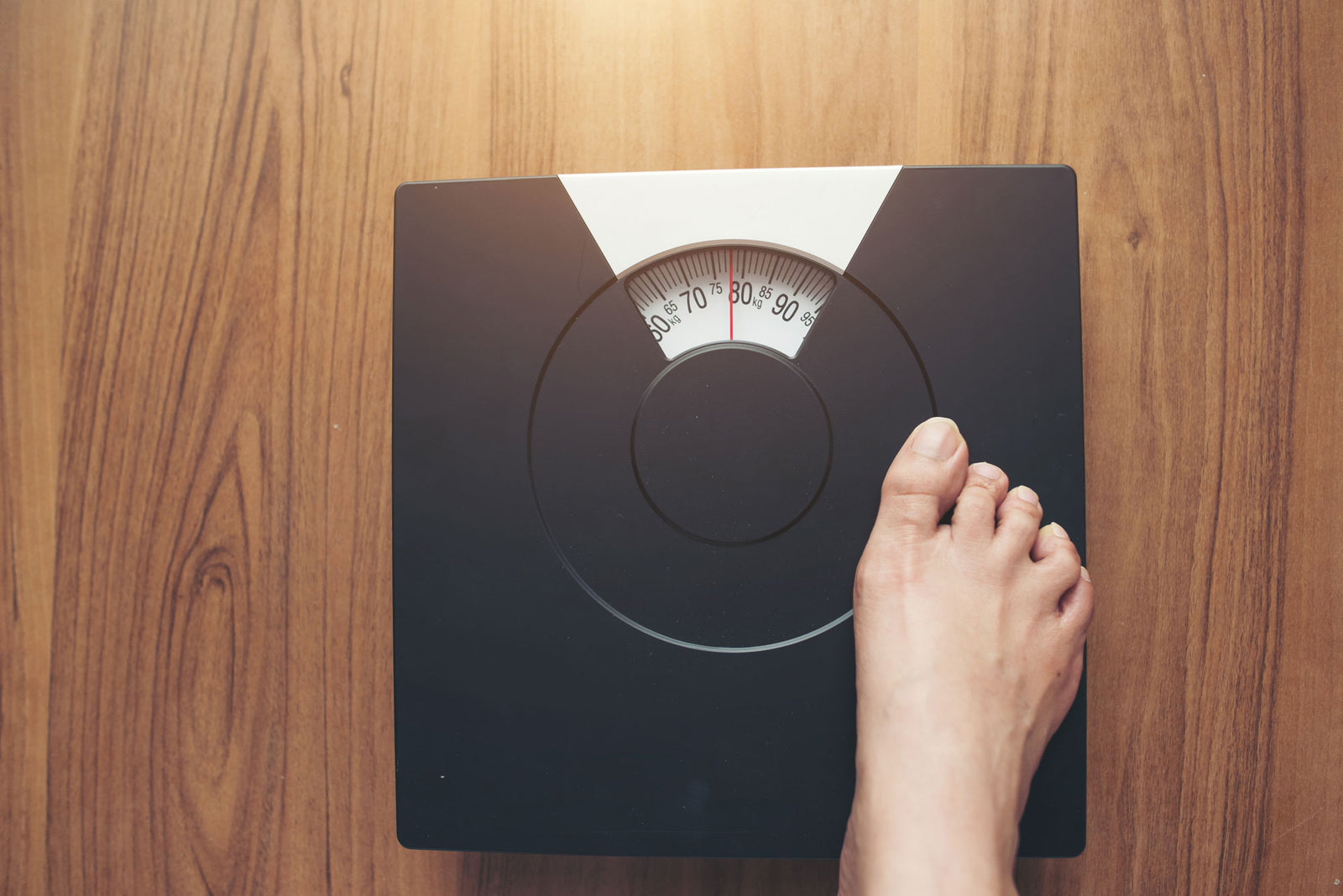Your Cart is Empty
Free shipping on Orders $79+
Free shipping on Orders $79+
Explore

When the Scale Keeps Going Up By Dr. Cassidy Miller
April 20, 2021 10 min read
Doctor’s Note
A new series featuring leading physicians who love plants as much as we do!
There is a very common complaint I have been getting a lot from my patients: “After I turned 35, the scale won’t budge. In fact, it seems like it keeps going up no matter what I do.” Sound familiar? I see women try so hard to get themselves back on track with their weight with no success. They seemingly do all of the right things, but feel like it’s an uphill battle they can’t quite tackle. Why is this?
As women, when we go through cycles like perimenopause and menopause, our estrogen levels decrease. Estrogen is a key hormone that helps to regulate metabolism, specifically metabolism of sugars and fats. When we aren’t metabolizing lipids and sugars as efficiently, they get turned into body fat. This is most commonly seen around the midsection as stubborn belly fat.
One frustrating mantra that is often preached in the diet industry is calories in, calories out is the only thing that matters with weight loss. I’m here today to tell you it is NOT simply calories in, calories out and it should not be dismissed as such. While calories and nutrients are still extremely important, there are other metabolic factors at play. With shifting hormones, it is important to create a plan that works with your body and focus on a diet and exercise routine that supports your goals.
Let’s talk about diet: what to eat, when to eat and how much.
The Most Important Things to Eat After 35
1. Protein
The decline in estrogen during perimenopause and menopause causes a decrease in muscle mass as well as muscle strength5. Muscles are dependent on protein as their main source of fuel. Protein is also extremely important for maintaining the metabolic rate, which will help to promote weight loss. Therefore, it is recommended that women eat approximately 20-25 grams of protein per meal (or 1.0-1.2g per kg of body weight)8. It is also important to note that not all protein is created equal.
Therefore, it is important to make sure you are getting your protein from a clean, organic source that does a great job at providing a wide amino acid profile so that all of your essential amino acid needs are being met. For plant-based sources, you want to make sure the source is organic, made from whole foods (no vegan frankenmeat) and does not have unnecessary fillers or hidden ingredients that could negate your good intentions. If you eat animal sources, it’s important to look for grass fed/grass finished, wild-caught and pasture raised.
It might feel overwhelming to have to investigate so many factors to make sure you are getting a quality protein. That is why I love recommending a great source of high qualityprotein powder that you can add into your daily routine can help to take the stress off. Incorporating products such as theVegan Vanilla Proteini offers a great way to make sure you are getting an adequate amount of great quality protein with your meal. This can be used as either a meal replacement or as a post-workout snack to help give your body the protein it requires. It’s full of nutrient-dense plant sources of protein that check all the boxes of what I look for in a protein.
2. High Fiber Foods
Fiber is extremely important for a number of health concerns- especially for hormones. For weight loss, fiber has the ability to help suppress the appetite because it acts as a bulking agent that slows down digestion and keeps you feeling full longer. It can also help to regulate blood sugar. After a certain age, we are more prone to insulin resistance, which leads to weight gain as well as a predisposition for other diseases such as diabetes, cardiovascular disease and breast cancer2.
By eating foods that combat the insulin resistance, our blood sugar stays within a more normal range, which improves weight loss and reduces the risk of those diseases. Also, fiber helps to reduce overall inflammation, which is additionally important in reducing weight and bloating that you may be used to feeling after a meal. Fiber can come in many sources from our diet, however, getting the right sources of fiber can often be difficult.
By incorporating thePineapple Chia Cleanse into a daily diet routine, while also eating a clean diet filled with fruit and vegetables, you will be set up with the fiber you need to help balance your hormones and promote weight loss. This is one of the very best products on the market that I can recommend for fiber.
3. Fruits and vegetables
Growing up, we were always told to eat our vegetables. Many doctors and nutrition experts are now advising to fill at least half of your plate with veggies (some even say 75%). Why is that? Vegetables (and fruits) are exceptionally nutrient dense and help to provide your body with much of what it needs to fight inflammation, strengthen the immune system and ward off disease. It has also been found that certain fruits and vegetables can help with menopausal symptoms10.
Those that have gotten the most hype through recent studies include broccoli and other cruciferous foods. These foods were shown to increase a type of estrogen in the body that is beneficial at reducing breast cancer risk. Not only does eating a diet high in vegetables and fruits improve weight loss, it is also beneficial for reducing hot flashes, mitigating depression and improving sleep. While filling your plate with vegetables sounds like a great idea on paper, it’s not always attainable at every meal.
For times when you feel like you have gaps, incorporating a product likeOrganic Cold Pressed Greens that is high in the plant nutrients your body needs, can be a great supplement to your diet. It has over 20 organic green vegetables from land and sea, so it’s a wonderful addition to your diet to ensure you are getting enough green vegetables every day.
4. Phytoestrogen containing foods
Mother nature is amazing! There are actually foods with a compound called phytoestrogen that, in the body, looks and acts similarly to estrogen. At certain times in our life, such as before menopause, it is often recommended to limit some of these foods, so as not to get too much estrogen. However, in perimenopause and menopause, this can be used to our advantage. By adding foods that are high in phytoestrogens, we can support the body by replacing some of the estrogen that has been lost. This helps to provide a balancing effect. Not only can this be beneficial in weight loss by improving lipid metabolism, but also in diminishing hot flashes and night sweats7.
The most powerful phytoestrogen food is soy. (Note: it is important to look for organic soy, as much of the soy grown in the United States is genetically modified)1. Eating things like miso, edamame, tofu, soy protein isolate, etc. can be great additions to the diet to boost phytoestrogens in the body. Other great phytoestrogen sources include green tea, flaxseeds and raw broccoli, however these are at a significantly smaller amount than soy4.
5. Low Carbohydrate
There is a lot of research coming out that shows how a low carbohydrate diet can be beneficial in reducing perimenopausal and menopausal weight gain. This means, replacing those simple carbohydrate meals (like bread, pastas, white rice, and other grains) with meals rich in protein, healthy fats, and a lot of vegetables is a key factor in reducing those extra pounds after menopause. This study also found that low-fat diets actually increased weight gain in menopause3. Therefore, incorporating those healthy fat sources such as nuts, seeds, avocados, coconut oil, etc. is extremely important in weight loss and overall health.
What Not to Eat:
Reducing or eliminating processed foods, fried foods, foods high in sugar and alcohol is a necessary part in accomplishing any weight loss goal. This information is largely repeated in the weight loss industry, but that is because it is so important for achieving weight loss goals. If you had to pick one thing to help with weight loss, this would be it. Not only are these foods high in empty, non-nutritious calories that eat up your daily caloric needs, they also create body-wide inflammation and a disruption in the gut microbiome, which makes weight loss even more difficult. You don’t have to go completely cold turkey, I’m a big believer that an indulgence every once in a while is important for the soul. However, if your goal is weight loss, these should be extremely scarce from your diet.
How much to eat:
It’s true, in order to lose weight you need to burn more calories than you consume. However, eating too little calories can actually have a negative effect. This is due to the fact that if your body does not have enough calories, it will cause a loss of muscle and ultimately a decrease in metabolic rate (the opposite of what we are trying to do). Also, the other thing to consider is that not all calories are created equal. Having an extremely nutrient dense meal consisting of 500 calories is not processed and utilized the same as a 500-calorie milkshake.
Being conscious of the number of calories you are taking in may need to be a part of your routine for a while. However, long term, intuitive eating may be one of the biggest things to turn the needle in your weight loss goals.
Intuitive eating focuses on being very intentional about the food you put into your body and reflecting on how it makes you feel. When you are hungry try asking: am I hungry or am I dehydrated? What am I hungry for? Halfway through your meal it can also be helpful to ask yourself if you are still hungry or if you are eating just to “clean your plate”. As children, we are often told we have to finish our meal before we can leave the table. Finishing the meal often means cleaning your plate. This is something that can stay with us throughout our lives and we don’t feel that we are done eating until our plate is cleared. Taking the time to really reflect on your body and your hunger cues can be one of the most beneficial ways to lose weight.
When to eat:
Intermittent fasting is a new buzz word in the health industry. If done properly, it can be incredibly beneficial for a multitude of health concerns including weight loss, disease prevention, anti-aging and cellular repair. It is important to note that the proper intermittent fasting can be different for each person and may require some trial and error to determine what works best for you and your body.
Intermittent fasting is the idea that abstaining from food for a length of time can help the body to restore. It has been shown to be very beneficial in weight loss for many reasons including typically eating fewer calories (due to the time restriction), decreased insulin levels, increased growth hormone levels and increased metabolic rate11. Typical time periods of intermittent fasting are 12-16 hours of fasted time. If incorporating intermittent fasting into a daily routine, it has been shown that doing much more than 16 hours of fasting can have negative impacts on women. Therefore, it may be beneficial to start slow and work your way up to see how your body responds. Putting too much stress on the body from a fasted state can actually work against our goals. Therefore, it is important to listen to your body and find out what works best for you.
I hope this information has given you a clear roadmap of the best things you can do for supporting your hormones and weight loss. While it may seem daunting, there is plenty of science and clinical success achieved from following my protocol above. If you are just getting started, I recommend you pick up theEverything Bundle, which is a complete system to getting back on track. Once you get your bundle, post in ourFacebook Group and let us know- I look forward to hearing your amazing results! Remember, we are always on your side!
By Dr. Cassidy Miller, ND
Doctor’s Note
A new series featuring leading physicians who love plants as much as we do!
For more SMART lifestyle tips like this, visit our other blogs at www.smartpressedjuice.com and follow us on Instagram or like us on Facebook. You can also visit our shop to stock up on our delicious juices.
References:
1) Center for Food Safety and Applied Nutrition. (2020, September 28). GMO Crops, Animal
Food, and Beyond. Retrieved from https://www.fda.gov/food/agricultural
biotechnology/gmo-crops-animal-food-and-beyond
2) C V, S. B., S, B., & A, S. (2012). Analysis of the degree of insulin resistance in post menopausal
women by using skin temperature measurements and fasting insulin and fasting glucose
levels: a case control study. Journal of clinical and diagnostic research : JCDR, 6(10),
1644–1647. https://doi.org/10.7860/JCDR/2012/4377.2646
3) Ford, C., Chang, S., Vitolins, M. Z., Fenton, J. I., Howard, B. V., Rhee, J. J., Stefanick, M., Chen,
B., Snetselaar, L., Urrutia, R., & Frazier-Wood, A. C. (2017). Evaluation of diet pattern
and weight gain in postmenopausal women enrolled in the Women's Health Initiative Observational Study. The British journal of nutrition, 117(8), 1189–1197. https://doi.org/10.1017/S0007114517000952
4)Hudson, T., & Northrup, C. (2008). Womens encyclopedia of natural medicine: Alternative
therapies and integrative medicine for total health and wellness. New York: McGraw
Hill.
5) Maltais ML, Desroches J, Dionne IJ. Changes in muscle mass and strength after menopause. J
Musculoskelet Neuronal Interact. 2009 Oct-Dec;9(4):186-97. PMID: 19949277.
6) Nedungadi TP, Clegg DJ. Sexual dimorphism in body fat distribution and risk for
cardiovascular diseases. J Cardiovasc Transl Res. 2009 Sep;2(3):321-7. doi:
10.1007/s12265-009-9101-1. Epub 2009 Apr 23. PMID: 20560019.
7) Patisaul, H. B., & Jefferson, W. (2010). The pros and cons of phytoestrogens. Frontiers in
neuroendocrinology, 31(4), 400–419. https://doi.org/10.1016/j.yfrne.2010.03.003
8) Rizzoli R, Stevenson JC, Bauer JM, van Loon LJ, Walrand S, Kanis JA, Cooper C, Brandi ML,
Diez-Perez A, Reginster JY; ESCEO Task Force. The role of dietary protein and vitamin D
in maintaining musculoskeletal health in postmenopausal women: a consensus
statement from the European Society for Clinical and Economic Aspects of Osteoporosis
and Osteoarthritis (ESCEO). Maturitas. 2014 Sep;79(1):122-32. doi:
10.1016/j.maturitas.2014.07.005. Epub 2014 Jul 17. Erratum in: Maturitas. 2015
Mar;80(3):337. PMID: 25082206.
9) Shin, B. K., Kang, S., Kim, D. S., & Park, S. (2018). Intermittent fasting protects against the
deterioration of cognitive function, energy metabolism and dyslipidemia in Alzheimer's
disease-induced estrogen deficient rats. Experimental biology and medicine (Maywood,
N.J.), 243(4), 334–343.https://doi.org/10.1177/1535370217751610
10) Soleymani M, Siassi F, Qorbani M, Khosravi S, Aslany Z, Abshirini M, Zolfaghari G, Sotoudeh
- Dietary patterns and their association with menopausal symptoms: a cross-sectional
study. Menopause. 2019 Apr;26(4):365-372. doi: 10.1097/GME.0000000000001245.
PMID: 30363011.
11) Zauner C, Schneeweiss B, Kranz A, Madl C, Ratheiser K, Kramer L, Roth E, Schneider B, Lenz
- Resting energy expenditure in short-term starvation is increased as a result of an
increase in serum norepinephrine. Am J Clin Nutr. 2000 Jun;71(6):1511-5. doi:
10.1093/ajcn/71.6.1511. PMID: 10837292.
*Disclaimer: You should always consult your doctor before beginning any new kind of diet, supplement or exercise routine. This should not be taken as medical advice.
{"themeColor":"#574CD5","iconColor":"#574CD5","showLogo":true,"topBottomPosition":10,"rightLeftPosition":10,"iconSize":"small","iconCustomSize":64,"position":"bottom-left"}

